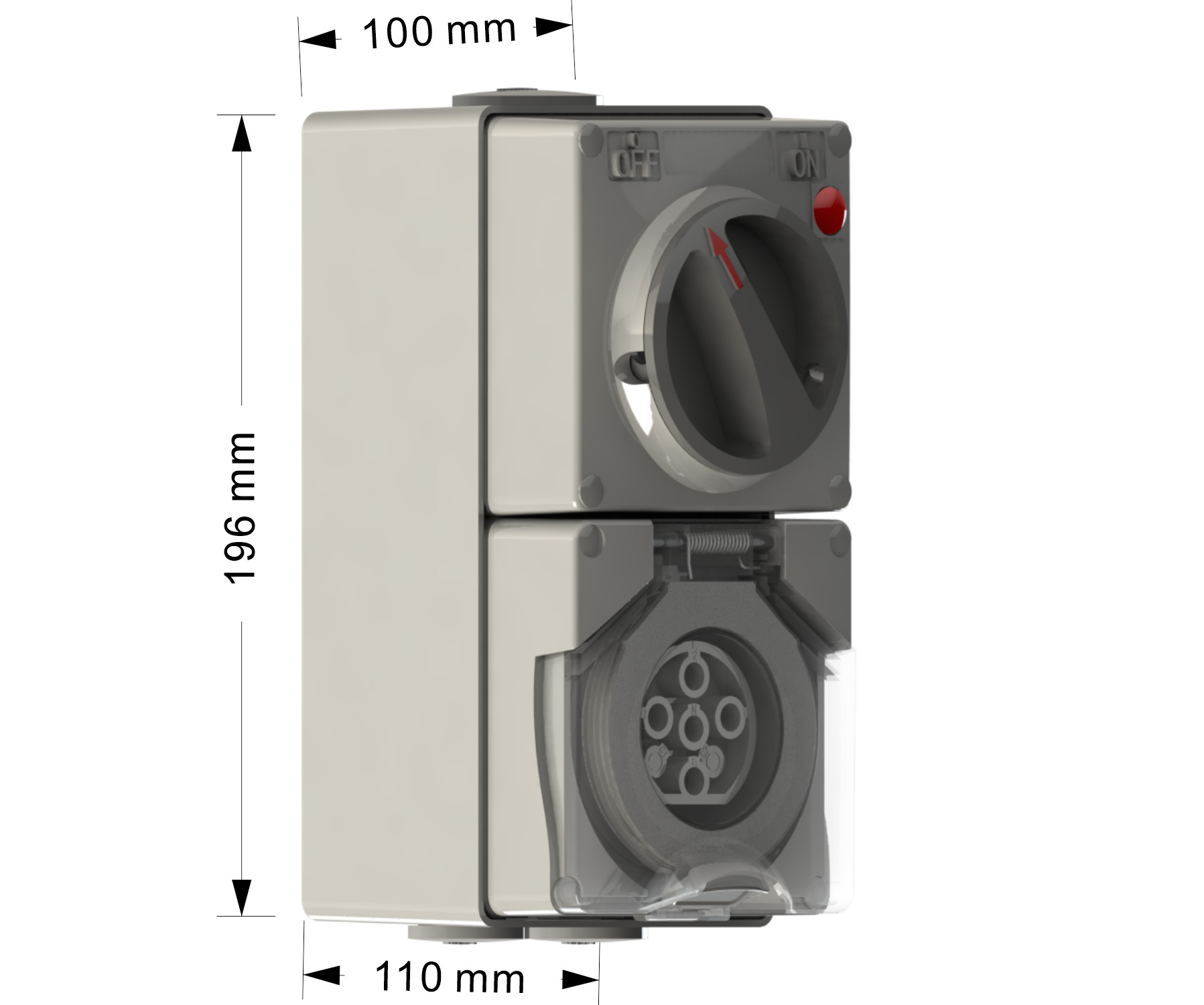There are specific considerations for the use of temporary outdoor power distribution boxes, often referred to as "spider boxes" or "power distribution centers." These portable electrical distribution units are commonly used in outdoor events, construction sites, and other temporary settings to provide safe and convenient access to electrical power. Here are some key considerations when using temporary outdoor power distribution boxes:
Weatherproofing:
Ensure that the power distribution box is designed to withstand outdoor conditions, including exposure to rain, snow, dust, and UV radiation. Look for units with weatherproof enclosures and gaskets to keep moisture out.
Proper Grounding:
Proper grounding is essential for electrical safety. Ensure that the distribution box has a ground fault circuit interrupter (GFCI) or a ground fault protection device (GFEPD) to protect against electrical shocks.
Adequate Capacity:
Choose a power distribution box with sufficient capacity to handle the electrical load of the equipment and tools you plan to connect. Avoid overloading the box, as it can lead to overheating and electrical hazards.
Circuit Protection:
Look for circuit breakers or fuses in the distribution box to protect against overcurrent and short circuits. Circuit breakers can be reset, while fuses need to be replaced.
Outlet Configuration:
Consider the types and number of outlets provided by the distribution box. Ensure that it offers the right combination of receptacles (e.g., 120V, 240V, twist-lock) to accommodate your equipment and tools.
Cable and Cord Management:
Properly manage the cables and cords connected to the distribution box. Use cable ramps or cord covers to protect them from physical damage and tripping hazards.
Location and Positioning:
Place the distribution box on a stable, level surface, and elevate it off the ground if necessary to prevent water ingress. Position it in an easily accessible but safe location, away from potential hazards like water puddles or construction equipment.
Regular Inspections:
Conduct regular visual inspections of the distribution box and its components, including the cords, outlets, and circuit protection devices. Look for signs of wear, damage, or overheating.
Qualified Operators:
Ensure that individuals responsible for operating and maintaining the power distribution box are qualified and trained in electrical safety practices. They should know how to use the equipment safely.
Emergency Disconnect:
Install an emergency disconnect switch or button near the distribution box to cut power quickly in case of an emergency or electrical hazard.
Compliance with Codes and Standards:
Ensure that the power distribution box meets local electrical codes and safety standards. Compliance is essential for safety and legal reasons.
Permit and Inspection:
In some areas, temporary electrical installations may require permits and inspections by local authorities. Check with your local building department to understand the regulations that apply to your specific use case.
Extension Cords:
Use high-quality, heavy-duty extension cords that are rated for outdoor use and the electrical load they will carry.
By following these considerations and guidelines, you can safely and effectively use temporary outdoor power distribution boxes, reducing the risk of electrical accidents and ensuring a reliable source of power for your outdoor events or construction projects.
 Abroad:[email protected]
Domestic:[email protected]
Abroad:[email protected]
Domestic:[email protected]
 Abroad: +86-18157471290
Domestic: +86-18157471293
Abroad: +86-18157471290
Domestic: +86-18157471293
- Home
- Products
- Industrial connectors
- Waterproof housings
- Power distribution box sets
- ABS electrical accessories
- Cables
- Moulds
- Power Distribution Board/Box
- Extension Lead with Plug
- AS/NZS Waterproof Electrical Products
- C Series IEC/CEE Waterproof Electrical Products
- B Series IEC/CEE Waterproof Electrical Products
- Waterproof Window Cover
- Waterproof Plastic/Metal/Aluminum Box
- House Use Electrical Items
- About Us
- FAQ
- News
- Contact Us

